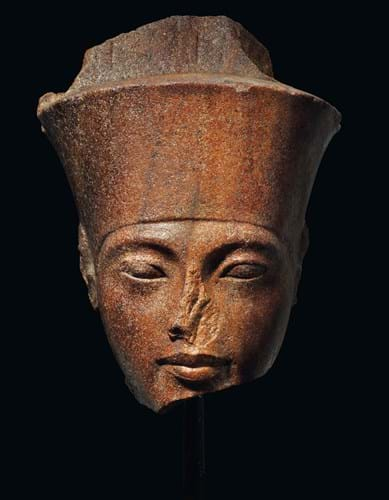
The 11in (28cm) high c.1333-1323BC carved brown quartzite bust of Tutankhamun carved with the face of the god Amun led Christie’s mixed-discipline event The Exceptional Sale on July 4.
Prior to the auction, Egypt had questioned “the legality of trading in these items, the authenticity of documents, and evidence of legal exportation from Egypt”.
The Egyptian embassy in London complained to the UK Foreign Office that the sale was “inconsistent with relevant international treaties and conventions” while, on the day of the sale, a small protest was held outside the King Street saleroom.
According to the BBC, the Egyptian National Committee for Antiquities Repatriation (NCAR) has now decided to instruct a British law firm to file a civil lawsuit over the sale of the bust, and said that it would also ask Interpol to issue a circular to “track down the illegal sale of Egyptian artefacts worldwide”.
Verifying the provenance and title
In response, Christie’s issued a statement saying that it “clearly carried out extensive due diligence verifying the provenance and legal title, establishing all required facts of recent ownership”.
It added that it would not and does not “sell any work where there isn’t clear title of ownership and a thorough understanding of modern provenance”.
It has also published a 50-year collecting history that indicated the piece had been in Germany, probably first in the collection of Prinz Wilhelm von Thurn und Taxis (1919-2004), since the 1960s.
The auction house questioned why Egypt had not raised doubts about the head when it had been exhibited in the past.
“We recognise historic objects can give rise to complex discussions about the past; our role today is to continue to provide a transparent, legitimate marketplace upholding the highest standards for the transfer of objects from one generation of collectors to the next.”






